Can You Reuse Coffee Grounds
A massive portion of the coffee we buy inevitably ends up in the trash. On average, when we brew coffee, we only use about 20% of the coffee grounds. This leaves us with 80% totally wasted!
Maybe you’ve looked longingly at the used coffee grounds as you dump them in the bin, wondering if there isn’t a better way?
Maybe you’ve taken that one step further and wondered if you can brew the same coffee grounds again?
That’s exactly what we’re here to discuss today— can you reuse coffee grounds?
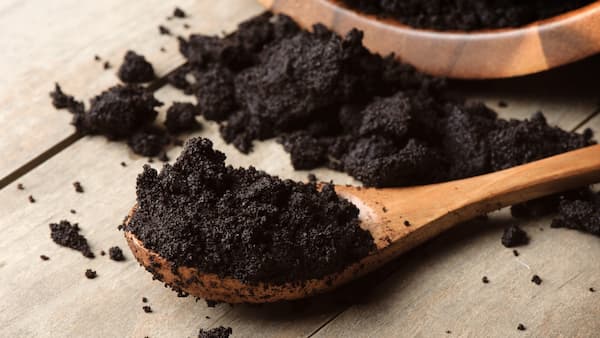
Reusing Coffee Grounds – Yes, It’s Possible
To be completely honest with you, before writing this article, I had never tried to use coffee grounds twice. So, being the intrepid coffee lover that I am, I did a few tests…
I had some coffee grounds leftover from this morning’s French press. It started its day as a tasty geisha from Guatemala. This coffee, when brewed with fresh grounds, is sweet, with delicious, lemon-like acidity.
I threw my better judgment aside, took one for the team, and reused these coffee grounds to make an AeroPress…
The Result
The resulting cup of coffee tasted pretty much like what you’d find at a diner. You know the type— that brown liquid in a mug, sort of resembling coffee, but not really. Are diners across the US reusing coffee grounds?!
There was absolutely no acidity or body and very little sweetness— it was a bit like hot water with slight flavors of caramel and cigarette ash. Honestly not as bad as I was expecting!
Not what I personally would call good, nor is it something I’ll be doing again. But hey— that’s me. It doesn’t mean that no one should enjoy it. Give it a try and see what you think.
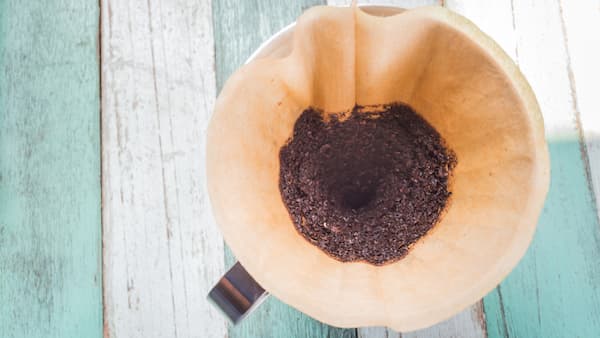
Is Coffee Grounds A Bad Idea?
So the results are conclusive. Can you reuse coffee grounds? Yes.
I’m not going to lie— it won’t be the perfect cup. It’ll be weak and over-extracted, which is an odd combination.
You might get a stronger flavor if you use more coffee, really dial up that ratio. But even then, it’s ill-advised if you care about intense flavor or texture.
How About Using Cold Leftover Coffee?
Say you made a big pot of coffee and only drank one cup. Does the leftover coffee need to be wasted, or can you reheat it?
Unfortunately, reheating coffee tends to taste pretty awful. It goes stale and loses its acidity and brightness. I have another proposition…
Transfer that coffee to a bottle, then put it in the fridge. Let it cool down fully, then pour it into a glass with a few ice cubes. Maybe even add a splash of sugar syrup if that’s your thing.
A refreshing, brewed iced coffee. Serving the coffee ice cold is a great way of hiding those oxidized flavors that may come as a result of the coffee sitting in the pot all day.
The Flavor Changes
Let’s go back to those flavor notes of the used grounds cup of coffee. Caramel and cigarette ash. Why did a coffee that started super fruity taste like this after being brewed a second time from the same grounds?
It’s all to do with extraction— what is extracted from the coffee, and when?
Extraction
Making coffee is all about dissolving coffee grounds using hot water. The maximum amount we can dissolve from the coffee grounds is about 30%. Everything that’s left after that is just fibrous material— basically woody-type stuff.
With a standard cup of filter coffee, one made with a batch brewer or a V60, we’re extracting about 20% of coffee grounds. This number will vary a little— a weak cup might be 17% and a strong one 22%. But more or less, 20% is a good base.
If we’ve already taken 20% from the grounds, that leaves 10% more than we could possibly take if we were to reuse coffee grounds twice.
Getting that last 10% from the old coffee grounds and into the cup would be a challenge. You’d need to use a really high water temperature and some extreme agitation. You might need to use a blender to extract that last bit. Even then, it’s more likely that in that second cup, we’d only end up with a 5% extraction.
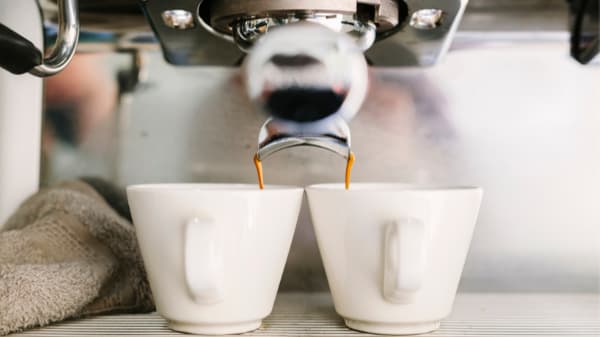
The question is— if we could extract what’s left from the grounds, what would that last 10% taste like?
Ground coffee tends to give up its flavors in stages as the brew progresses. What I mean is, the first flavor the coffee will give up is its acidity, followed by its sweetness, and finally its bitterness.
Keeping this in mind, we can get a pretty good idea that anything we extract from that last 10% would be bitter with no acidity and almost no sweetness.
This lines up well with the tasting notes mentioned earlier. We got that caramel, bittersweet taste, which is the last remaining bits of sweetness, then the cigarette ash, which is essentially the end of the line.
Oils
Liquid coffee is water that is full of both soluble and insoluble materials. Solubles are things that can dissolve completely into the water. Insolubles, on the other hand, are things that won’t— things like solids and oils.
One of the main things that are responsible for a coffee’s smooth, velvety body and silky mouthfeel are the oils.
Much of the oil in coffee will be extracted during the first brew. Meaning that if we brew those same coffee grounds twice, we’ll end up with a super-thin, low body in the subsequent extraction.
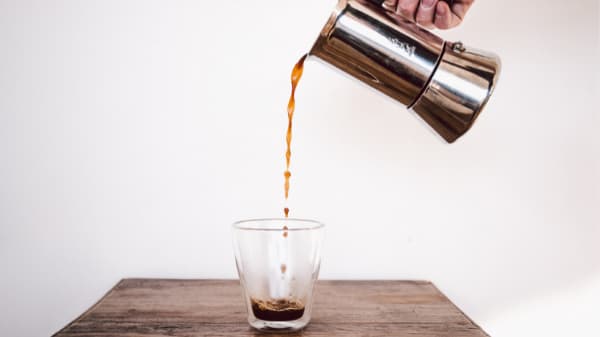
No More Caffeine!
Another thing we will certainly miss in a cup made with old coffee grounds is caffeine.
Most of the caffeine in a cup of coffee is extracted fairly quickly. While I’m not sure of the exact time frame, it’s somewhere in the realm of 30 seconds to a minute into the brew, depending on the brewing methods used. By the time we’ve finished our 3-4 minute brew, very little caffeine remains.
Using these coffee grounds twice, the second cup will have very low caffeine content. Sad face. Very sad face.
Reduced Potential Health Benefits
There are many health benefits associated with coffee and its antioxidant properties. Not only can caffeine improve mental and physical performance, but it has been suggested that coffee drinkers may have a reduced risk of heart failure.
If we use coffee grounds again, regardless of how much coffee we use or the brewing method we choose, these potential benefits will have come and gone with the first cup.
It All Depends on What You Like
How good that second cup tastes will depend on a couple of things. First, It’ll depend quite a lot on the coffee you started with, as well as the way you like to drink coffee.
If you start as I did with a fruity coffee, the difference between the first cup and the second cup is massive. But if you start with a more chocolatey coffee or one that has roasty, charred flavors, the difference between fresh and used grounds might not be so huge.
The same thing goes for how you like drinking coffee. If your perfect coffee is black, made with a French press, you’ll certainly taste the difference between fresh and used. Like night and day.
But if you tower your morning coffee with creamer and syrups, you might just get away with it.
The real bummer in this whole thing is that, even if you do manage to make it taste good, there will be almost no caffeine left. What a cruel world!
Other Uses For Old Or Used Coffee Grounds
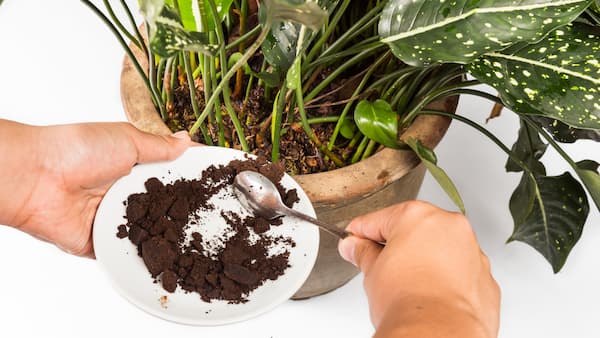
Ok. So using coffee grounds twice to make a second brew isn’t looking like the best idea in the world. But that’s ok!
Luckily, there are a bunch of other things you can do with your used coffee grounds.
Rather than throwing old grounds in the trash, give a few of these handy little hacks a try. Not only will you be making your morning coffee routine waste-free, but you’ll also get some extra life from something that would otherwise be trash!
Note that some of these hacks are for old coffee beans and used, damp coffee grounds.
- Make cold brew coffee (for old coffee grounds only). Cold-brew with re-used coffee grounds won’t work well.
- Cover old beans in chocolate.
- Reuse coffee grounds as a scrub for dead skin cells with a gritty texture as a natural exfoliant.
- Add soggy coffee grounds to the compost bin.
- Natural insect repellant.
- Sprinkle coffee grounds to neutralize strong odors and a bad smell.
- Use coffee grounds as a meat tenderizer.
- Dye clothes with coffee grounds.
- Reuse coffee grounds to grow mushrooms.
If you want to learn more, check out our guide for how to use old coffee grounds and which plants like coffee if you’re into gardening. No matter what you do, just don’t dispose of coffee in the garbage disposal.
Just Brew A Fresh Cup
There is a total of one scenario I can think of that reusing coffee grounds for a brew might be a good idea.
You’re camping somewhere cold. You need something hot to drink— you’ve run out of beans! Shock, horror! In that situation, maybe, just maybe, I might use coffee grounds twice.
Aside from that, brewing coffee fresh is the only way to go. It’s the only way of getting a truly tasty cup of coffee, full of flavor, just the way it should be.
You can reuse the coffee grounds in dozens of ways, but making coffee with it is at the bottom of my list.

